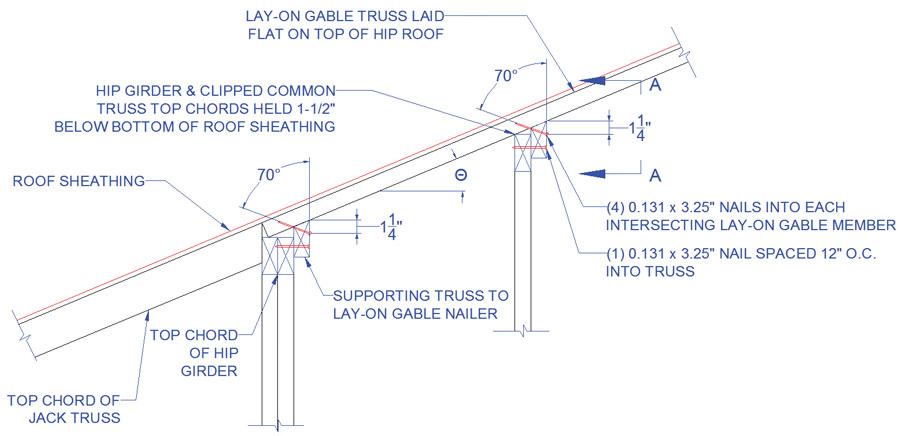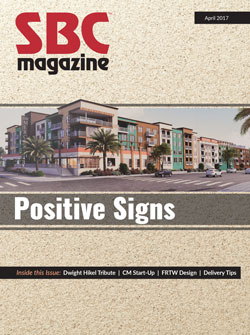Best Practices Provide a Best-Case Scenario
At recent chapter meetings in Missouri, Wisconsin and Iowa, component manufacturers (CMs) discussed SBCA’s library of technical design and installation best practices. This resource, introduced in these pages last summer, has been expanded over the past year to help CMs navigate a wide array of code-related challenges in their markets. The benefit of this collection still clearly shows in the story of Bob Mochinski, engineering manager at Littfin Truss in Winsted, Minnesota.
As Bob explained last year, “the new energy code here in Minnesota now requires one-and-a-half inches of continuous insulation on the exterior of the building foundation. The exterior walls are all 2x6, and the sill plate and walls cantilever out over the foundation wall so that the exterior wall sheathing matches the foam sheathing profile.” Thanks to the guidance provided in SBCA Research Report (SRR) No. 1505-03, “Use of Cantilevered Sill Plates with Metal Plate Connected Wood Trusses to Align with Varying Thicknesses of Exterior Sheathing,” Bob had a fully-explained construction method with an installation detail that he could put in the hands of building officials. SBCA even helped Bob get an engineer’s seal on the detail, which—while not strictly necessary—eased the market acceptance process.
Another example of best practice documents coming to the rescue comes from Keith Azlin, plant manager at U.S. Components in Tucson, Arizona, who was meeting resistance in the field. “Building inspectors in my area did not like lay-on gables,” Azlin recalled. “They weren’t able to verify connections during inspections. This was an issue, as they were afraid uplift would be a problem because the connection was coming from the top down into the edge of the top chord of the trusses.”
While many of the installers in Arizona liked the efficiency of the lay-on gables, as opposed to stick-framed purlins or rafters, the push-back from building inspectors was creating a headache. Azlin has been an active SBCA member for years, so he immediately turned to the association for a solution.
SBCA developed a construction detail and design guide that featured a beveled 2x4 attached to the underside of the lay on gable. The gable can then be nailed twice: first, horizontally into the top chord of the intersecting roof truss below the gable and second, diagonally into the lay-on gable above. A step-by-step design guide helps designers implement the solution. Designer and plan reviewer checklists help ensure the final design is code compliant. To encourage market acceptance of the new approach, the lay-on gable best practice collection includes an educational program that walks individuals through each step of the design and installation process.
“This solution from SBCA helped us get connections that could be verified. It was the perfect solution,” Azlin said.

If you’re struggling with a code-compliance-related design or installation issue in your marketplace, visit SBCA’s best practice library today! If you don’t see the perfect solution to your issue, contact SBCA so we can work with you to expand our library with the research and tools that will improve the market for every CM.

